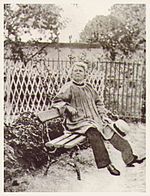No subscription or hidden extras
Read through all quotes from Rosa Bonheur
There Rosa Bonheur prepared detailed studies which Rosa Bonheur would later use as. Bonheur was born in Bordeaux (where her father had been friends with Francisco Goya who was living there in exile) but moved to Paris in 1828 at the age of six with her mother and brothers her father having gone ahead of them to establish a residence and income. To this practice in the company of her doting mother Rosa Bonheur attributed her love of drawing animals.
Bonheur is widely considered to have been the most famous female painter of the nineteenth century. As a painter Rosa Bonheur became famous primarily for two chief works: Ploughing in the Nivernais (in French: Le labourage nivernais le sombrage) which was first exhibited at the Salon of 1848 and is now in the Musée d’Orsay in Paris depicts a team of oxen ploughing a field while attended by peasants set against a vast pastoral landscape; and The Horse Fair (in French: Le marché aux chevaux) (which was exhibited at the Salon of 1853 (finiRosa Bonheurd in 1855) and is now in the Metropolitan Museum of Art in New York City. Rosa Bonheur born Marie-Rosalie Bonheur (16 March 1822 – 25 May 1899) was a French animalière realist artist and sculptor.

